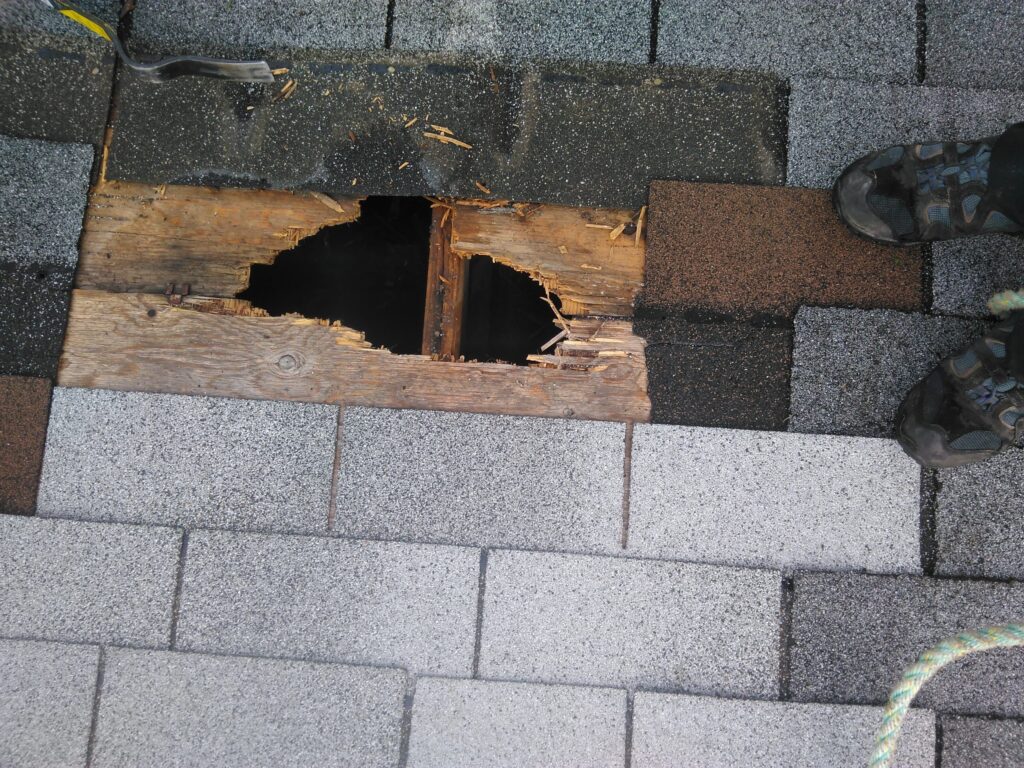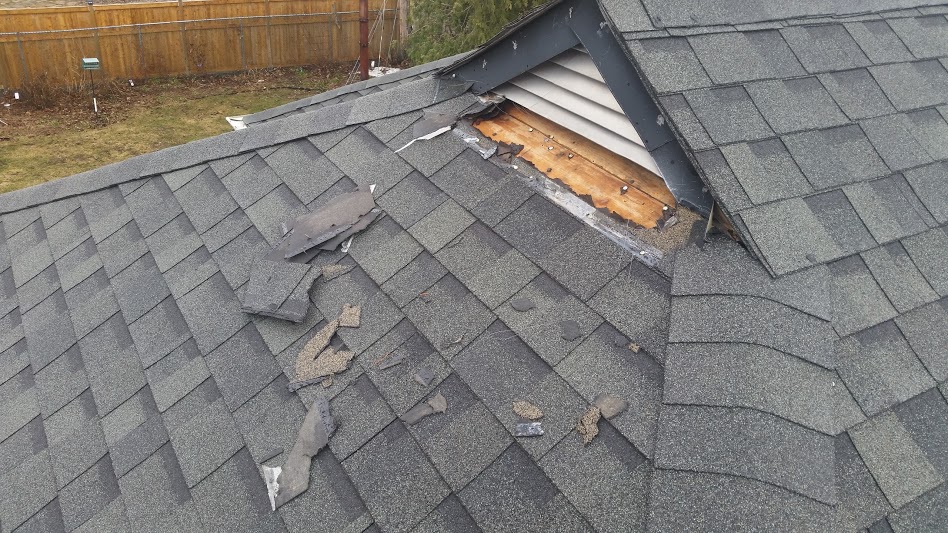Wild animals can enter your home in a number of surprising ways. Perhaps one of the most unexpected entrances is straight through your roof. Discover how raccoons have been known to enter attics through shingles and roof decking, how you can prevent this wildlife issue and why you need professional assistance to restore your home.
Ways a Raccoon Can Damage a Roof
There are a number of ways that a raccoon could enter through your roof. Sometimes these critters can dig, claw and chew directly through your roofing materials, but many find a small hole and make a larger opening to enter your home.
- Debris buildup on your roof is a common source of roofing damage that can encourage a raccoon to make a hole. As leaves, branches and other debris accumulates on your roof, it can cause water to pool and seep between your shingles.
- Water damage can rot plywood sheathing and compromise the structure of your roof.
- Attic vents are holes cut through your roof. Metal vents prevent animals and moisture from entering your roofline, but any structural damage can encourage a raccoon or other animal to enter. Be sure to inspect your roof for any signs of debris or vent damage.
Potential Hazards From a Damaged Roof
 Not only is it hazardous to have a raccoon in your attic, but a large hole in your roof can lead to other problems. Any hole that allows a raccoon to access your attic will allow water to enter as well. Water under your shingles can rot plywood sheathing and encourage mold growth on drywall. Wet insulation becomes matted down and loses much of its energy efficiency. A hole through all the layers of your roof can be costly to fix. Work with a professional to repair the sheathing and shingles to restore your roof and prevent further damage from water and wild animals. Before you seal the door, though, learn why it’s important to remove the raccoon from your attic and why you need to work with a professional wildlife removal expert.
Not only is it hazardous to have a raccoon in your attic, but a large hole in your roof can lead to other problems. Any hole that allows a raccoon to access your attic will allow water to enter as well. Water under your shingles can rot plywood sheathing and encourage mold growth on drywall. Wet insulation becomes matted down and loses much of its energy efficiency. A hole through all the layers of your roof can be costly to fix. Work with a professional to repair the sheathing and shingles to restore your roof and prevent further damage from water and wild animals. Before you seal the door, though, learn why it’s important to remove the raccoon from your attic and why you need to work with a professional wildlife removal expert.
Dangers of a Raccoon in Your Attic
Whether there’s a single raccoon or a complete infestation, there are a number of dangers associated with raccoons in your attic:
- New litters of babies
- Distemper, rabies and other diseases
- Ticks and fleas
- Aggressive behaviours
Gestation for a raccoon is approximately 63-65 days, with most litters arriving in March. Many female raccoons seek shelter to deliver and care for their babies. Once a raccoon creates a den in your attic, the smell can attract squirrels and other creatures. Raccoons, squirrels, skunks and other wild animals become aggressive when cornered, so an animal in your attic can increase the risk of being bitten, scratched or otherwise injured.
A litter of raccoons in your attic is difficult to remove safely and humanely. Raccoons are known for carrying diseases that can affect you, your pets or both. Distemper and rabies are serious viruses that affect raccoons, cats, and dogs and can be fatal. They can also carry ticks and fleas which can move from your attic to your home and their bites can cause itching, discomfort and even disease.
Reasons To Avoid DIY Wildlife Control
It’s very difficult to evict a raccoon that has discovered the comfort, safety and warmth of your attic. Removing a raccoon from its den is a dangerous prospect on your own. Even if you can remove one from your attic, preventing them from returning is particularly difficult as a homeowner. These resourceful animals often find alternative ways to enter your home or your attic. Once a raccoon has discovered a comfortable den, it can be extremely persistent in returning. Without careful inspection services, you may seal up your attic and accidentally trap a raccoon or a whole litter in your house. Most homeowners aren’t equipped to thoroughly clean and disinfect their homes after a wild animal has entered it. Raccoon droppings and other contaminants can spread diseases and be difficult to clean safely without professional cleaning agents and experience.
Professional Wildlife Removal Solutions
At Skedaddle Humane Wildlife Control, we handle any wildlife situation using three basic strategies:
- Assess and remove
- Clear and clean
- Prevent and protect
Our inspection service identifies any or all wild animals living in your home. Next, we use humane techniques to carefully remove the raccoons and other animals without harming them or their babies. Professional cleaning prevents the spread of disease and allows you to enjoy every area of your home without the risk of roundworm and other threats. We also ensure your home is sealed and protected from a future wildlife situation.
Contact Skedaddle Humane Wildlife Control Today
Don’t let a raccoon burrow through your roof and make a den in your attic. Contact us today if you hear unusual sounds or experience other signs that point to a raccoon infestation. Enjoy hassle-free wildlife removal services that are safe for you, your family and the wild animals.



